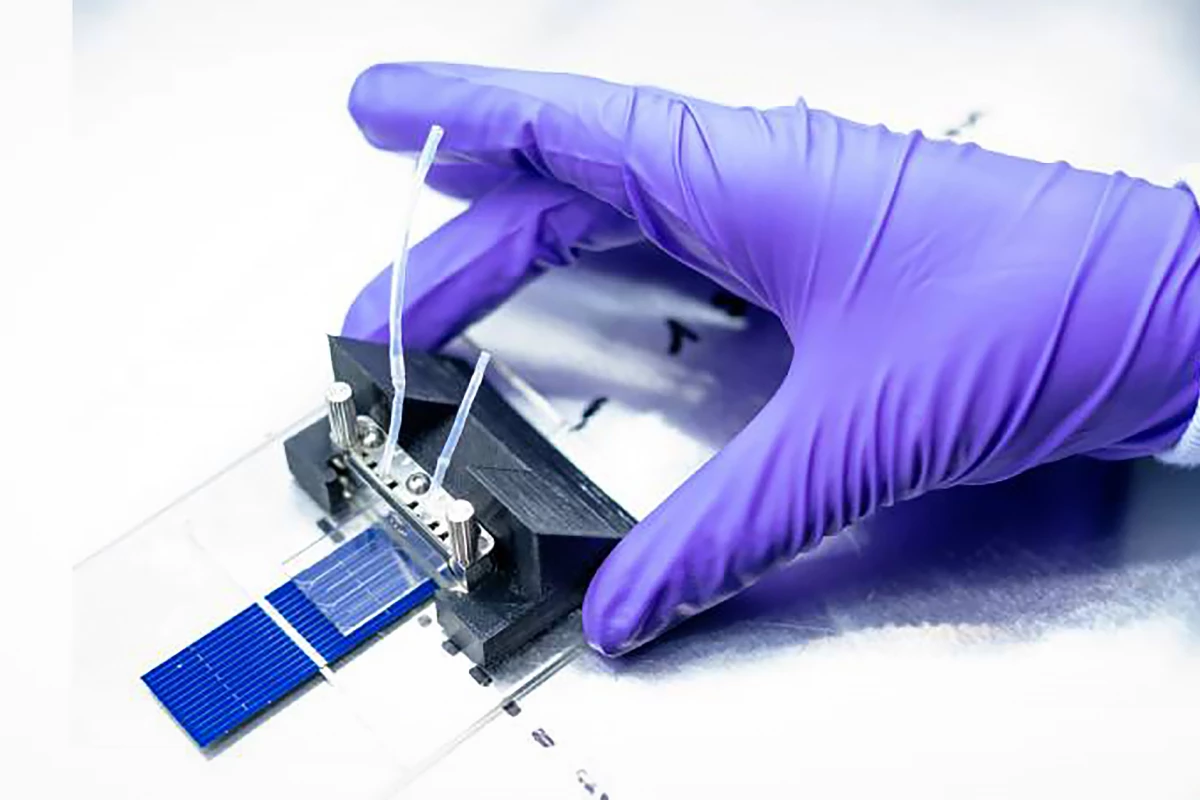An innovative hybrid solar device that combines a PV panel and energy storage has achieved record levels of energy storage efficiency for such a device. And unlike conventional batteries, the molecular solar thermal energy storage (MOST) device doesn't rely on scarce materials.
The "solar hybrid system" combines photovoltaic (PV) panels and an energy storage system in the one device. But, developing such a device involves overcoming a couple of key challenges to ensure the system operates efficiently. One is the effect of solar radiation, which causes panel temperature to increase and – somewhat counterintuitively – results in a 10% to 25% decrease in the efficiency of PV cells. Another is that current energy storage technologies, such as batteries, rely on scarce, unsustainable materials.
However, researchers from Chalmers University of Technology in Sweden and the Universitat Politècnica de Catalunya – Barcelona Tech, Spain, have come up with a novel hybrid device that addresses both of these issues while maximizing solar energy utilization and achieving record energy storage efficiency.
Silicon-based PV systems have emerged as the dominant solar energy tech for good reason. Silicon is abundant and using it to manufacture PV modules is cost-effective, scalable, and environmentally sustainable. Silicon-based PV systems are also highly efficient in converting sunlight into electricity. Nonetheless, they are still prone to overheating, which causes inefficiency.

So, the researchers diverged from the traditional method of combining a thermal absorber layer with a PV cell and combined a silicon solar cell with an innovative molecular solar thermal energy storage system, abbreviated to MOST. The system is placed on top of the PV cell and contains organic molecules flowing through a microfluidic chip that can store sunlight as chemical energy via the process of photoisomerization. A common photo-reaction, photoisomerization is where an organic molecule changes its structure upon exposure to light.
Returning to physics basics, photons are tiny packets of light representing the entire spectrum of electromagnetic radiation. Photons travel in a wave-like pattern, from low-energy radio waves to the energy waves that produce visible light and on to higher-energy waves like ultraviolet light.
When MOST’s organic molecules are irradiated with high-energy photons, or light particles, such as ultraviolet light, they undergo a chemical transformation, storing the created energy for later use. Additionally, these molecules cool the PV cell by acting as an optical filter that blocks the photons that would normally cause the cell to heat up and reduce efficiency. In this way, the MOST system enables both the generation of electricity and the storage of chemical energy.

The researchers tested the new device in real-world scenarios, manually orienting it to face the sun between 9 a.m. and 3 p.m. on an autumnal November day in Barcelona in 2022 that reached a high temperature of around 39 °C (102 °F). The new device achieved a solar storage efficiency of 2.3%, the highest recorded molecular thermal solar energy efficiency to date. It also lowered PV cell temperature by up to 8 °C (14 °F), reducing energy losses due to heat and increasing power conversion efficiency by 12.6%. Total solar energy utilization was up to 14.9%.
From a sustainability point of view, the MOST system not only boosts energy efficiency to reduce reliance on fossil fuels, but it also uses common elements like carbon, hydrogen, oxygen and nitrogen in place of scarce (and expensive) materials such as lithium, cobalt, and nickel, which are usually used to make batteries.
“Despite the potential for further optimization, this development is a significant stride toward a long-duration energy storage technology that complements PV systems,” said the researchers.
The MOST system has been proven to last over 1,000 charge/discharge cycles with minimal degradation, meaning it would be feasible for the system to operate continuously for months. The researchers expect that their hybrid device will address the growing need for clean energy and efficient storage as we transition away from fossil fuels.
The study was published in the journal Joule.
Source: UPC







